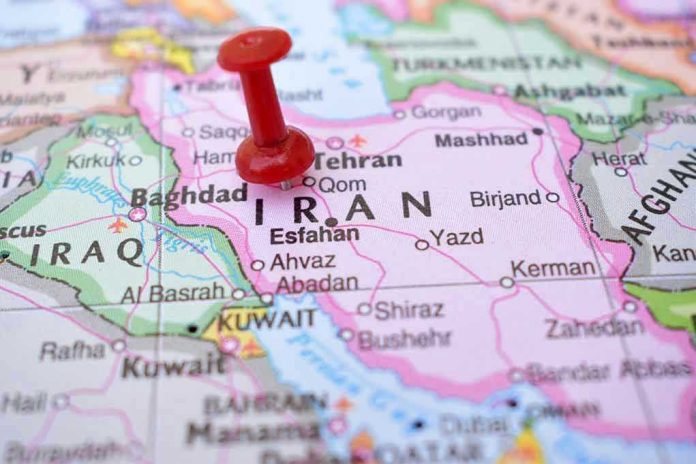🔴 Website 👉 https://u-s-news.com/
Telegram 👉 https://t.me/usnewscom_channel
Iran’s regime faces a catastrophic failure as five years of drought and government mismanagement bring Tehran to the brink of evacuation, exposing the dangers of centralized control and failed leftist policies.
Story Snapshot
- Tehran’s water reserves have dropped to crisis levels, forcing unprecedented cut-offs and possible evacuation of 10 million residents.
- Chronic mismanagement and overreliance on government solutions have worsened a crisis decades in the making.
- Daily life has collapsed for millions, with forced office closures, harsh penalties for high-use households, and public unrest growing.
- Experts highlight regime failures and long-term threats to agriculture, economic stability, and social order.
Tehran’s Water Collapse: Drought and Policy Failure Converge
For the fifth consecutive year, Iran’s capital is running dry. Water reserves in Tehran’s main reservoirs have plummeted to just 13 percent of capacity, with the critical Lar Dam at only 1 percent. The regime’s answer: sweeping water cut-offs for the city’s 10 million residents, forced closure of government offices, and consideration of an evacuation—an unprecedented step for a modern capital. These events stem not merely from nature, but from a pattern of centralized mismanagement, failed infrastructure investments, and a refusal to adapt policies to long-term realities.
Official warnings began in March 2025, when water authorities demanded a 20 percent reduction in usage. By July, international headlines warned of imminent infrastructure collapse. November brought harsh new rationing: the top 5 percent of water users now face 12-hour supply cut-offs, while ordinary families struggle to maintain daily routines. The government even urged residents to “go on vacation” just to lower demand, a move that highlights their lack of practical solutions and the disconnect from the daily hardships faced by ordinary Iranians.
Chronic Mismanagement and Centralized Control Exposed
Iran’s water crisis did not appear overnight. Decades of unchecked urban growth, over-extraction of groundwater, and inefficient agricultural practices were made worse by the regime’s reliance on outdated, top-down interventions. Lake Urmia’s collapse in the 2010s was an early warning, yet leaders failed to heed it, instead doubling down on unsustainable policies. Recent years have seen rainfall drop by nearly half, but the root causes remain government neglect and lack of genuine investment in modern infrastructure or conservation incentives. International partners have provided some technical support, but their influence is limited by the regime’s insistence on control.
Farmers and rural communities have suffered acutely, with dried wells and devastated crops forcing migration to already stressed cities. Tensions are rising between affluent households—now targeted for penalties—and the broader population. The government’s emergency projects, like new pipelines and expanded wastewater recycling, lag far behind what is needed, leaving millions in limbo and fueling social unrest.
Social Breakdown and the Threat to Stability
As water rationing disrupts daily life, the closure of government offices and the threat of mass relocation have rocked Tehran’s social fabric. Businesses face operational chaos, and families fear for their futures in a city that may soon become unlivable. The risk of unrest and panic grows with every new restriction. Long-term, the crisis threatens to permanently damage Iran’s agricultural base, accelerate urban migration, and destabilize the entire region. The regime’s heavy-handed approach—penalizing high users, urging mass vacations, and prioritizing control over reform—offers little hope for real recovery.
Experts inside and outside Iran agree: the crisis reveals the dangers of centralized power unchecked by accountability, individual initiative, or true reform. Without a drastic shift toward decentralized management, market incentives, and respect for property rights, Tehran’s collapse may be only the beginning of broader regional instability.
Expert Warnings and Lessons for the West
Water management specialists and climate scientists point to chronic mismanagement and lack of conservation incentives as the main drivers of Iran’s disaster. While droughts are growing more severe worldwide, experts stress that policy failure and regime overreach have done more damage than nature alone. The international community urges Iran to adopt sustainable practices and coordinate regionally. For American readers, this crisis serves as a stark reminder: government overreach, erosion of private rights, and failed leftist policies can devastate nations. Protecting constitutional freedoms, property rights, and local control remains the best safeguard against similar disasters here at home.
Iran in crisis as major drought forces regime to cut off water to Tehran, consider evacuation pic.twitter.com/IS4RjWixnE
— F R E E D O M (@KDugan1850) November 9, 2025
Limited data remains on the exact timeline for Tehran’s infrastructure collapse, but the warnings are clear. The world is watching as a megacity edges toward forced evacuation—proof that top-down control and disregard for practical realities yield only chaos for ordinary people. Americans must remain vigilant to preserve liberty, constitutional order, and the values that keep our own cities strong and resilient.
Sources:
Water scarcity in Iran – Wikipedia
Iran plans water cuts for Tehran amid worst drought in decades – France24

